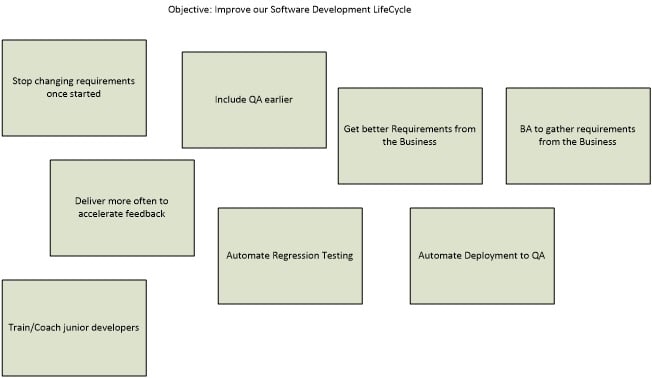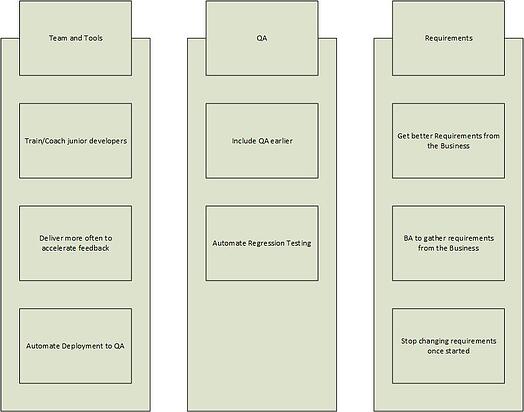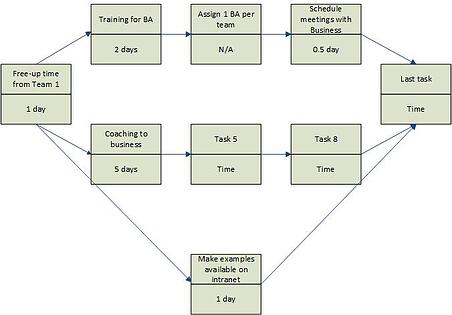Bjorn Lomborg – Ted Talk – Note: This is not about VS-TFS
Supporting our customers during change, we often help them working through ideas, using problem solving techniques, while dealing with team dynamics. Many tools and techniques are widely available and well documented, but it is often difficult to know which one to use to solve/help with a particular situation. Following are some of the ones we use regularly.
(Note: Some of the techniques might not be used “by the book”)
To gather and group ideas in common themes: Affinity diagram
Phrase the issue/objective and ask participants to record ideas on post-it/index cards without talking. It encourages creativity, there are no bad ideas, and using a written approach will allow overcoming “team paralysis”.
“Issue or Objective”

(NOTE: Another technique is the “speedboat”)
Then, as a facilitator, group the ideas into themes (buckets of ideas, see also the Card Sort approach):

Use the outcome of the session to get more details using the other techniques. To find causes and potential cure to a problem: Cause & Effect / Fishbone / Ishikawa diagram.
- And remember that, as we have often have limited resources, it’s always good to prioritize effort. Techniques like “Buy a feature” (or a variation), “$100 Test” or “Covey’s Time Management Matrix and the four quadrants” will help.

An Effect can be positive (an Objective) or negative (a Problem). Ask participants to record ideas on post-it and place them on the branches. Branches on a typical fishbone will be causes and sub-causes; typically you can go one step further and use the data to start thinking about potential solutions.
When it’s time to map the tasks for implementation, the tree diagram (not the one about probabilities calculation) allows participants to visualize logical links and makes the plan more real/concrete:

Or the activity network diagram to add representation of sequential and simultaneous tasks:

Adding time will ensure you don’t have unrealistic implementation time table. You can also add names of individuals or teams.
In conclusion, as stated at the beginning, many techniques exist; make sure to use the appropriate one in the right context. Also make sure you facilitate the sessions (brainstorming sessions should not turn into venting sessions), use Brainwriting vs. Brainstorming so that extroverts don’t dominate the contributions and remember to prioritize the work.
Read more on 7M tools, Dr. Shewart on (total) quality control practice, Mizuno on Management for Quality Improvement: The 7 New Qc Tools, Six Sigma, … The Memory Jogger II is, I find, a good summary (no affiliation with Goal/QPC). Other good books are “The Game Storming” and “Agile Retrospective”.
And remember that you can’t manage what you don’t measure, leverage the InCycle Blueprint template to manage the project and measure the improvements.








